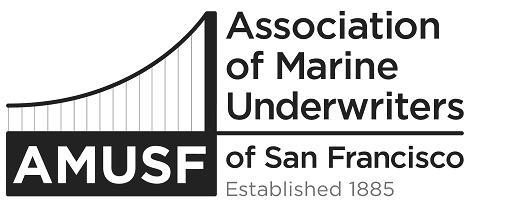R
/RDC (Running Down Clause) - See "Collision Clause."
Re-Cooper / Re-Cooperage
To repair or replace damaged packaging and consolidate sound cargo during transit in order for the cargo to complete the voyage. It is so named after the cooper, whose work was making and repairing barrels and casks, which were used as shipping packages on early cargo vessels.
Record - See "American Bureau of Shipping."
Recovery
Amount received from a third party responsible for a loss on which a claim has been paid. See "Subrogation."
Red Label
A label on shipments of dangerous material requiring on-deck stowage.
Red letter clause
A clause printed in red on a contract to alert the parties to certain limitations and exclusions in the contract. The clause originated with ship repair contracts.
Reef
A ridge of rock or coral lying at or very close to the surface of the sea forming a barrier and hazard to navigation.
Reefer
Refrigerated container or cargo hold of a vessel.
An arrangement between insurance companies, where one company (the ceding company) cedes a portion of a risk (policy, premium, and losses) to the other insurance company (the assuming company or reinsurer). Thus the risk of loss is spread and a disproportionately large loss under a single policy does not fall on one company. Reinsurers can be other insurance companies or companies specializing in reinsurance only.
There are two types of reinsurance:
- Facultative - reinsurance of one particular risk (policy) where the reinsurer retains the right (faculty) to accept or reject each risk offered by the ceding company.
- Treaty - reinsurance (usually written on an annual basis) of an entire class of business consisting of many policies, where the ceding company agrees to cede and the reinsurer agrees to assume all of the risks (policies) of a particular class of business.
When a ceding company places either facultative or treaty reinsurance, the reinsurance is usually placed on one of the following bases:
- Pro Rata or Quota Share - reinsurance in which the reinsurer shares a pro rata portion of the premium and losses of the ceding company on a fixed percentage basis; e.g. 25%, 30%, or some other percentage.
- Excess of Loss - Reinsurance In Which The Reinsurer (Subject To A Specified Limit) Pays 100% Of The Losses Of The Ceding Company In Excess Of A Certain Agreed Limit (E.G. $1,000,000. Retention) Either On A Per Risk Basis Or In Excess Of A Certain Aggregate Of All Losses Of A Particular Type (E.G. $10,000,000 For Windstorm Losses). It Includes Various Kinds Of Reinsurance: Catastrophe, Per Risk, Per Occurrence, And Aggregate Excess Of Loss.
Release
A document signed by a third party claimant acknowledging receipt of a claim payment and agreeing to make no further claim.
Repatriation
Transporting a seaman from a foreign port back to the port where he or she signed on as part of the vessel’s crew. See "Seaman’s Rights and Remedies."
Respondentia
An ancient form of loan by the ship’s master secured by the cargo. If the cargo arrived at destination, the loan was to be repaid; but if the cargo did not arrive, the borrower did not have to repay the loan. See "Bottomry Bond."
Rigging
Collective term for all the ropes, lines, wires, chains, and rods used to support the masts, and move the spars and sails of a vessel.
Risk
A fortuitous peril or hazard; i.e. something that may happen, not something that is inevitable.
R.O.D. (Rust, Oxidation, and Discoloration)
An exclusion often used when insuring shipments of steel.
Roll - See "Vessel Movement."
RO-RO - See "Vessel Types" Appendix F.
Rub Rails
Superimposed heavy strips of wood or other material running the length of the vessel on the outside of the hull to protect the hull against impact and scraping damage.
Rudder
A movable fin extending into the water (usually at the aft end of the vessel) used to steer the vessel.
Running Down Clause - See "Collision Clause."
Running Lights
Various colored lights required by law on vessels underway between sunset and sunrise to distinguish its height, starboard from port, and stern from bow. Vessels at anchor use different lights.
Ryan / Cox Tape - See "Temperature Recording Devices."

